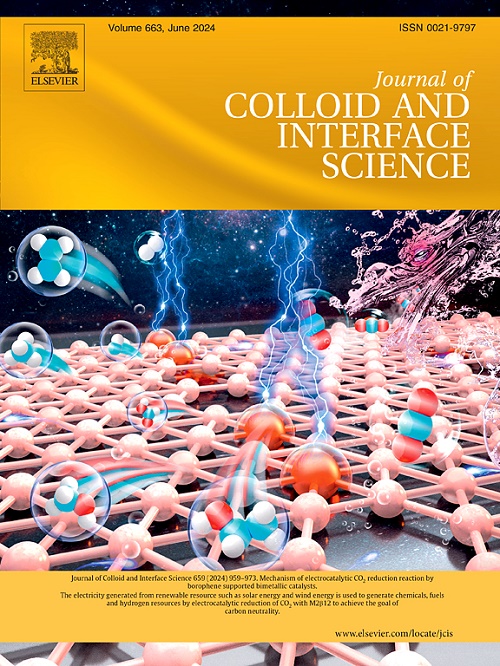Piezoelectric-mediated two-dimensional copper-based metal–organic framework for synergistic sonodynamic and cuproptosis-driven tumor therapy
IF 9.4
1区 化学
Q1 CHEMISTRY, PHYSICAL
引用次数: 0
Abstract
Sonodynamic therapy (SDT) is a minimally invasive therapeutic approach that utilizes sonosensitizers to catalyze substrates and generate reactive oxygen species (ROS) under ultrasound stimulation, ultimately inducing tumor cell death. Enhancing the piezoelectric properties of nanomaterials and modulating the semiconductor energy band are effective strategies to improve the catalytic efficiency of sonosensitizers. In this study, we developed a two-dimensional (2D) copper-based piezoelectric metal–organic framework (MOF) sonosensitizer, denoted as CM, through the coordination of copper and dimethylimidazole. The unique 2D MOF structure imparts CM with piezoelectric characteristics, enabling it to enhance SDT efficacy by modulating the semiconductor bandgap and carrier mobility. Upon ultrasound irradiation, CM catalyzes oxygen to undergo a cascade reaction, producing highly toxic singlet oxygen. Additionally, cupric ions in CM can be reduced by glutathione, facilitating the spontaneous catalysis of hydrogen peroxide in tumors to generate hydroxyl radicals and deplete glutathione, thereby inducing oxidative damage. Moreover, cupric ions in CM can trigger tumor cell cuproptosis, which, in combination with the generated ROS, accelerates cell death. Thus, this study establishes a MOF-based system for controllably inducing multi-pathway cancer cell death and provides a foundation for enhancing ultrasound-catalyzed tumor therapy through the optimization of piezoelectric properties.

压电介导的二维铜基金属有机框架,用于协同声动力和杯突症驱动的肿瘤治疗。
声动力疗法(SDT)是一种微创治疗方法,它利用声敏化剂在超声刺激下催化底物并产生活性氧(ROS),最终诱导肿瘤细胞死亡。增强纳米材料的压电特性和调节半导体能带是提高声纳敏化剂催化效率的有效策略。在这项研究中,我们通过铜和二甲基咪唑的配位,开发出了一种二维(2D)铜基压电金属有机框架(MOF)声纳敏化剂,简称 CM。独特的二维 MOF 结构赋予了 CM 压电特性,使其能够通过调节半导体带隙和载流子迁移率来提高 SDT 的功效。在超声波照射下,CM 会催化氧气发生级联反应,产生剧毒的单线态氧。此外,CM 中的铜离子可被谷胱甘肽还原,促进肿瘤中的过氧化氢自发催化生成羟自由基并消耗谷胱甘肽,从而诱发氧化损伤。此外,CM 中的铜离子可诱发肿瘤细胞的杯突症,与产生的 ROS 结合,加速细胞死亡。因此,这项研究建立了一个基于 MOF 的系统,可控地诱导多途径的癌细胞死亡,并为通过优化压电特性加强超声催化肿瘤治疗奠定了基础。
本文章由计算机程序翻译,如有差异,请以英文原文为准。
求助全文
约1分钟内获得全文
求助全文
来源期刊
CiteScore
16.10
自引率
7.10%
发文量
2568
审稿时长
2 months
期刊介绍:
The Journal of Colloid and Interface Science publishes original research findings on the fundamental principles of colloid and interface science, as well as innovative applications in various fields. The criteria for publication include impact, quality, novelty, and originality.
Emphasis:
The journal emphasizes fundamental scientific innovation within the following categories:
A.Colloidal Materials and Nanomaterials
B.Soft Colloidal and Self-Assembly Systems
C.Adsorption, Catalysis, and Electrochemistry
D.Interfacial Processes, Capillarity, and Wetting
E.Biomaterials and Nanomedicine
F.Energy Conversion and Storage, and Environmental Technologies

 求助内容:
求助内容: 应助结果提醒方式:
应助结果提醒方式:


